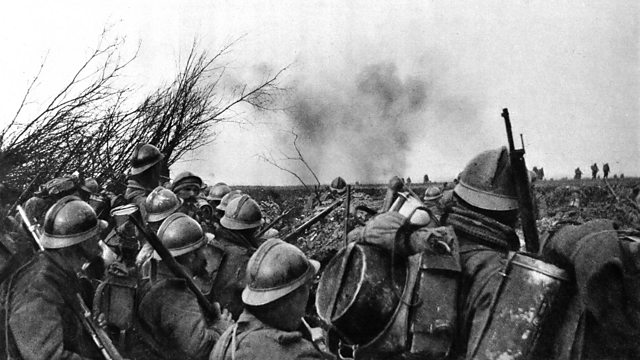Loss and Legacy
In the century after the battle of Verdun, the weight and memory of its terrible losses would shape both France and Germany. David Reynolds explores Verdun's mournful legacy.
How do you mark the sacrifice of so many? How do you live with the dead? No other battle so defined the French experience of the Great War as Verdun, which raged from February to October 1916, and didn't truly end until the war did. In the decades that followed both the voices of the veterans and a nation's mournful sense of sacrifice played out across the landscape of Verdun, most notably in its alarming and astonishing ossuary.
This great white tower, resembling a crusaders sword or a giant, bone white, I.C.B.M. filled with the remains of German & French dead, stands amidst the garden of memory that is the national cemetery. Yet the graves are unquiet. This was where Marshall Petain, saviour of Verdun, should have been buried but can never be. Both Petain and DeGaulle were marked by Verdun and their fates would be intertwined in the inter-war years. In the 1930s German and French veterans would meet and pledge no more war but such pledges were hollow promises cynically exploited by veteran trench soldier Adolf Hitler who would soon sacrifice his own troops in a battle often likened to Verdun, Stalingrad.
The battle and its memory have shifted in meaning over the decades, moving from national to trans-national and proving the most symbolic of staging grounds for amity and understanding between two old foes as they remade Europe after 1945.
David Reynolds stands in the shadow of the great Ossuary of Douaumont and journeys through a landscape of loss.
Producer: Mark Burman.
Last on
More episodes
Previous
Next
You are at the last episode
Broadcast
- Wed 24 Feb 2016 11:00成人快手 Radio 4
Part of...
Marking the centenary of World War One across the 成人快手

